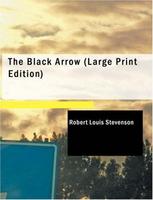Subject

photo credits: Wikimedia Commons
The Wars of the Roses (1455–1487), known at the time and for more than a century after as the Civil Wars, was a series of civil wars fought over control of the English throne in the mid-to-late fifteenth century. These wars were fought between supporters of two rival cadet branches of the royal House of Plantagenet: Lancaster and York. The wars extinguished the last male line of the House of Lancaster in 1471, leading to the Tudor family inheriting the Lancastrian claim to the throne. Following the war and the extinction of the last male line of the House of York in 1485, a politically arranged marriage united the Houses of Lancaster and York, creating a new royal dynasty which inherited the Yorkist claim as well, thereby resolving the conflict. The Wars of the Roses had their roots in the wake of the Hundred Years' War. After fighting a series of armed conflicts with France, the English monarchy's prestige was weakened by emergent socio-economic troubles. This weakened prestige unfolded structural problems with bastard feudalism, a system developed by the powerful duchies created by Edward III. Combined with the mental infirmity and weak rule of King Henry VI, these structural problems revived interest in the Yorkist claim to the throne by Richard of York. Historians disagree over which of these factors was the main catalyst for the wars. It was also used as a proxy war between France (on the Lancastrian side) and the Burgundian State (on the Yorkist side). The wars began in 1455 when Richard of York captured Henry at the First Battle of St Albans and was appointed Lord Protector by Parliament, leading to an uneasy peace. Fighting resumed four years later. Yorkists, led by Richard Neville, 16th Earl of Warwick, often referred to as "Warwick the Kingmaker," captured Henry again at the Battle of Northampton. Richard of York attempted to claim the throne but was dissuaded and was then killed at the Battle of Wakefield. His son Edward inherited his claim. The Yorkists lost custody of Henry after the Second Battle of St Albans but destroyed the Lancastrian army at the Battle of Towton. Edward was formally crowned three months later in June 1461. Resistance to Edward's rule continued but was crushed at the Battle of Hexham in 1464, and a period of relative peace ensued. In 1464, Edward married Elizabeth Woodville, the widow of a Lancastrian knight, and showed favour to her family. He also reversed Warwick's policy of seeking closer ties with France. Warwick, offended and sidelined, turned against Edward. In 1469, his supporters defeated a Yorkist army at the Battle of Edgcote. He captured and imprisoned Edward shortly afterwards. However, his attempt to replace Edward with his younger brother George of Clarence met with no support and Edward was allowed to resume his rule, seemingly reconciled with Warwick. Within a year, Edward accused Warwick and Clarence of fresh treachery and forced them to flee. In France, Warwick joined forces with Margaret of Anjou and led an invasion of England. When Warwick's younger brother John Neville deserted Edward, Edward in turn was forced to flee to Flanders. Warwick restored Henry VI as king. Henry's renewed reign was short-lived however. With aid from Burgundy, Edward mounted a counter-invasion. Henry was returned to prison, and Edward defeated and killed Warwick at the Battle of Barnet. He then defeated a Lancastrian army at the Battle of Tewkesbury. Henry's heir, Edward of Westminster, was killed. Henry himself died or was assassinated on Edward's order shortly afterwards. Edward ruled unopposed, and England enjoyed a period of relative peace until his death twelve years later in 1483. Edward's twelve-year-old son reigned for 78 days as Edward V until he was deposed by his uncle, Richard III. Richard assumed the throne under a cloud of controversy, particularly the disappearance of Edward IV's two sons, sparking a short-lived but major revolt and triggering a wave of desertions of prominent Yorkists to the Lancastrian cause. In the midst of the chaos, Henry Tudor, son of Henry VI's half-brother Edmund Tudor and a descendant of Edward III through his mother Lady Margaret Beaufort, returned from exile with an army of English, French, and Breton troops. Henry defeated and killed Richard at Bosworth Field in 1485, assumed the throne as Henry VII, and married Elizabeth of York, the eldest daughter and sole heir of Edward IV, thereby uniting the rival claims. John de la Pole, 1st Earl of Lincoln then put forward Lambert Simnel as an impostor Edward Plantagenet, a potential claimant to the throne. Lincoln's army was defeated and Lincoln himself killed at Stoke Field in 1487, ending the wars. Henry never faced any further serious internal military threats to his reign. In 1490, Perkin Warbeck claimed to be Richard of Shrewsbury, Edward IV's second son and rival claimant to the throne, but was executed before any rebellion could be launched.The House of Tudor ruled England until 1603. The reign of the Tudor dynasty saw the strengthening of the prestige and power of the English monarchy, particularly under Henry VIII and Elizabeth I, and the end of the medieval period in England which subsequently saw the dawn of the English Renaissance. Historian John Guy argued that "England was economically healthier, more expansive, and more optimistic under the Tudors" than at any time since the Roman occupation of Britain. Source: Wikipedia (en)
Works about Wars of the Roses 3
Subject - wd:Q127751

